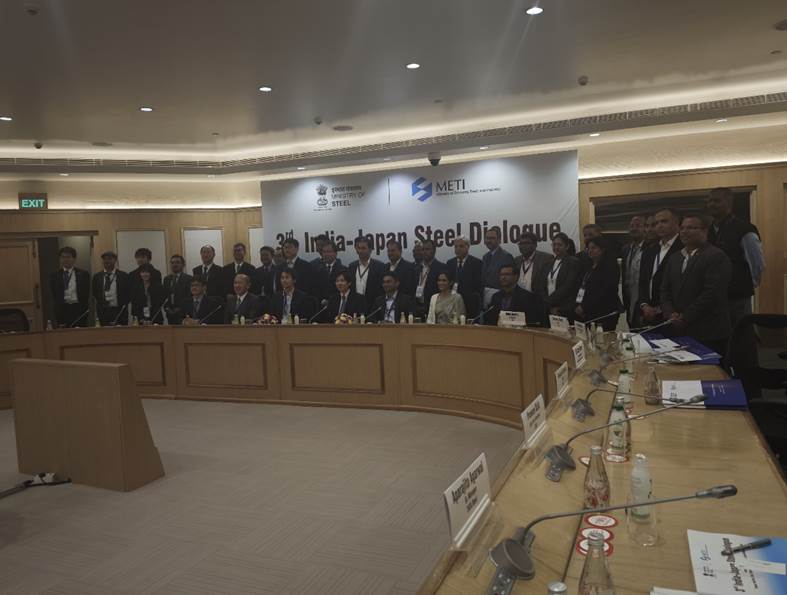India-Japan Steel Dialogue

- 10 Feb 2025
In News:
The 3rd India-Japan Steel Dialogue was held on February 4, 2025, at Vigyan Bhavan, New Delhi, as part of the institutional mechanism under the Memorandum of Cooperation (MoC) signed between the two nations in December 2020. The dialogue was co-chaired by senior officials from India’s Ministry of Steel and Japan’s Ministry of Economy, Trade and Industry (METI).
Key Highlights and Strategic Focus Areas:
- Bilateral Steel Cooperation:The dialogue served as a platform to deepen cooperation in areas such as technology exchange, workplace safety, product diversification, and capacity building. Both nations reviewed progress under existing initiatives and reaffirmed commitment to long-term collaboration in the steel sector.
- Ease of Doing Business & Investment Support:India reiterated its commitment to facilitating ease of doing business for Japanese companies, while Japan assured continued technological and financial support for investments in advanced steel technologies in India.
- Sustainable Steel Production:India showcased recent initiatives like the Green Steel Report and the Taxonomy of Green Steel, underlining efforts to align steel production with sustainability goals and climate commitments.
- Demographic & Market Advantages:The Indian delegation highlighted the growing domestic demand driven by infrastructure investments, and the potential of India’s demographic dividend to attract foreign investment in the steel sector.
- Global Regulatory Issues – EU CBAM:Both sides discussed the European Union’s Carbon Border Adjustment Mechanism (EU CBAM), which seeks to impose carbon pricing on imports in sectors such as iron and steel, aluminum, cement, fertilizers, electricity, and hydrogen.
- CBAM Phase Timeline:
- Transitional Phase: 2023–2025 (reporting obligations)
- Full Implementation: From 2026 (financial obligations imposed)
- CBAM Phase Timeline:
Relevance:
CBAM has major implications for international steel trade, necessitating cleaner production methods and greater transparency in carbon emissions data.
